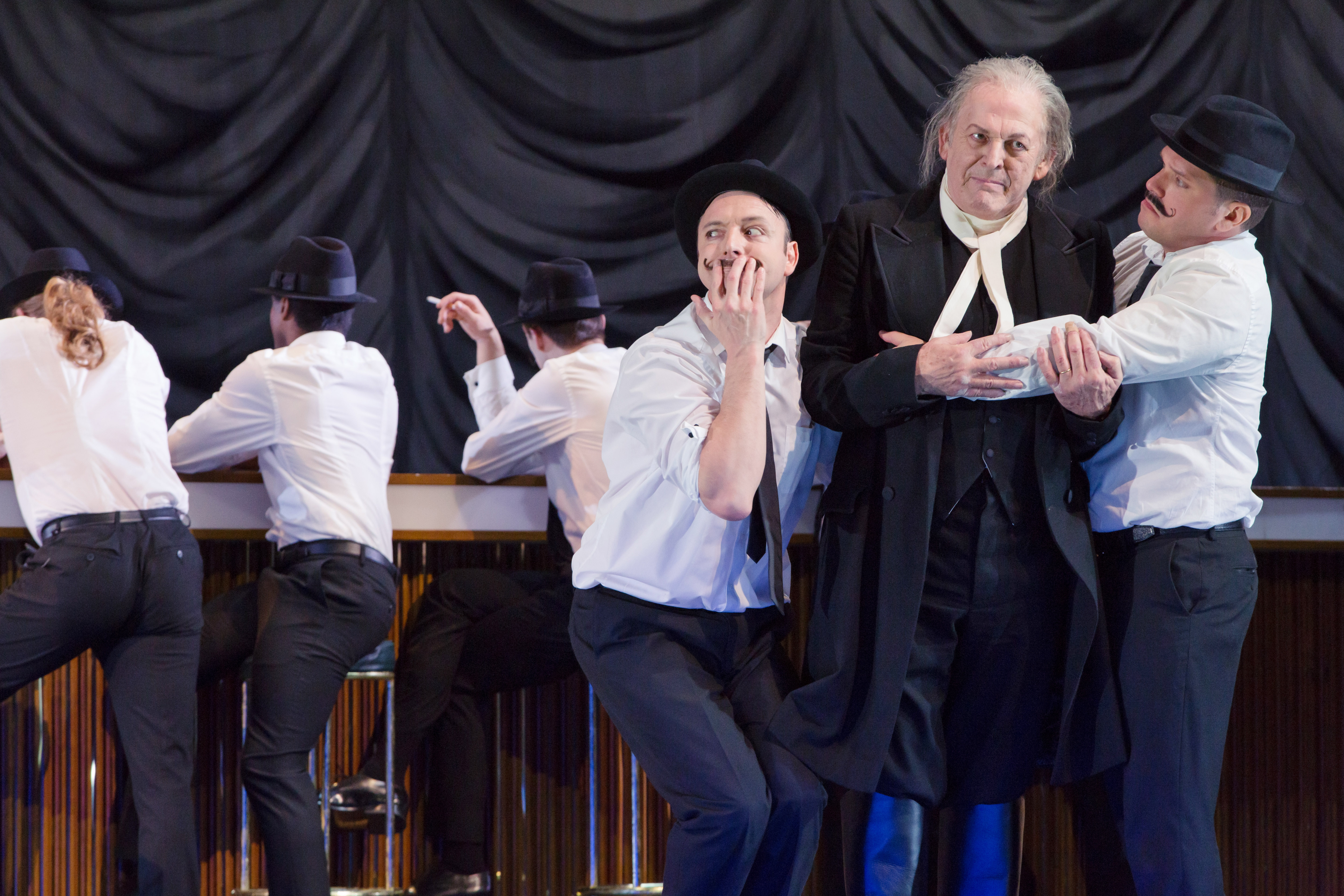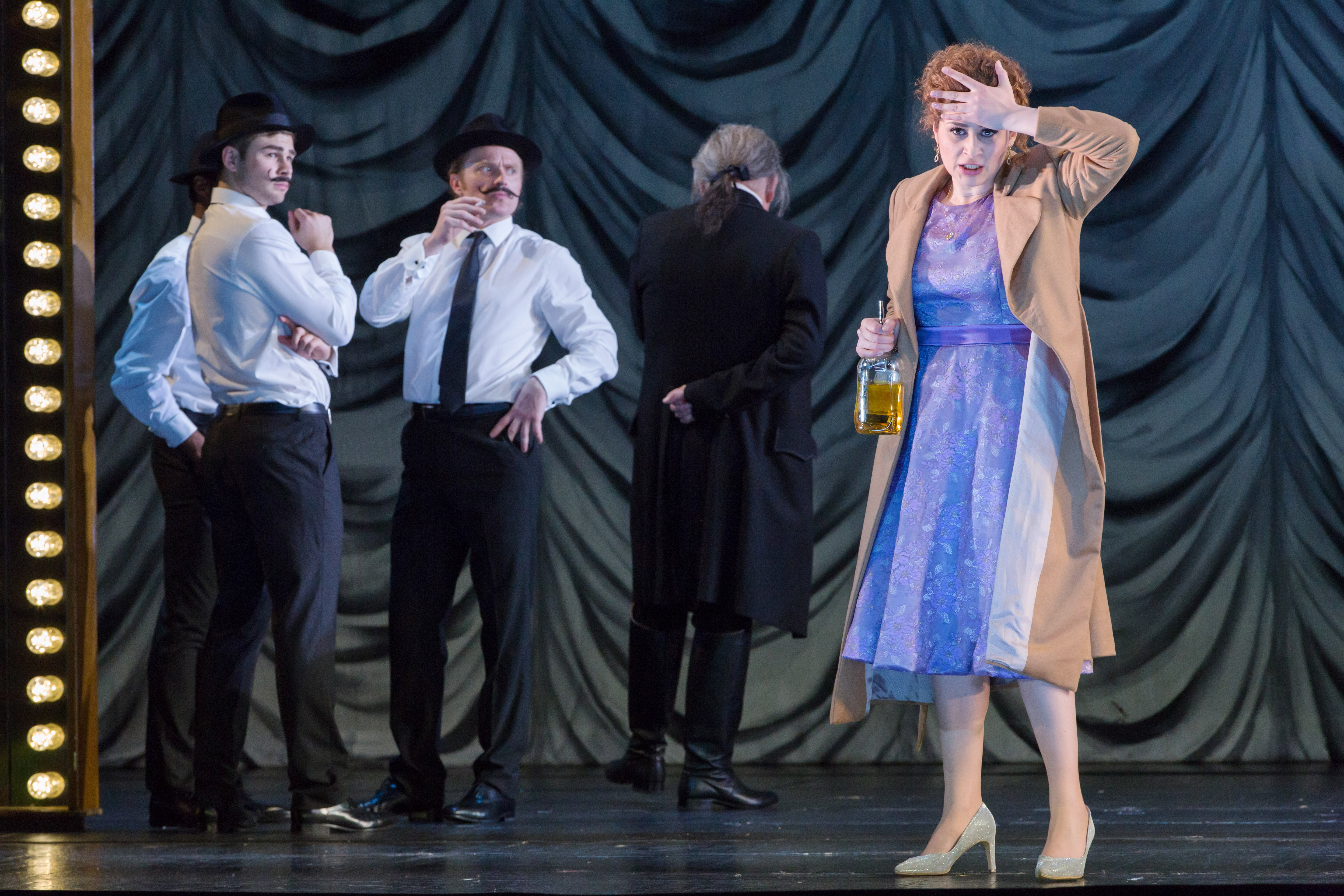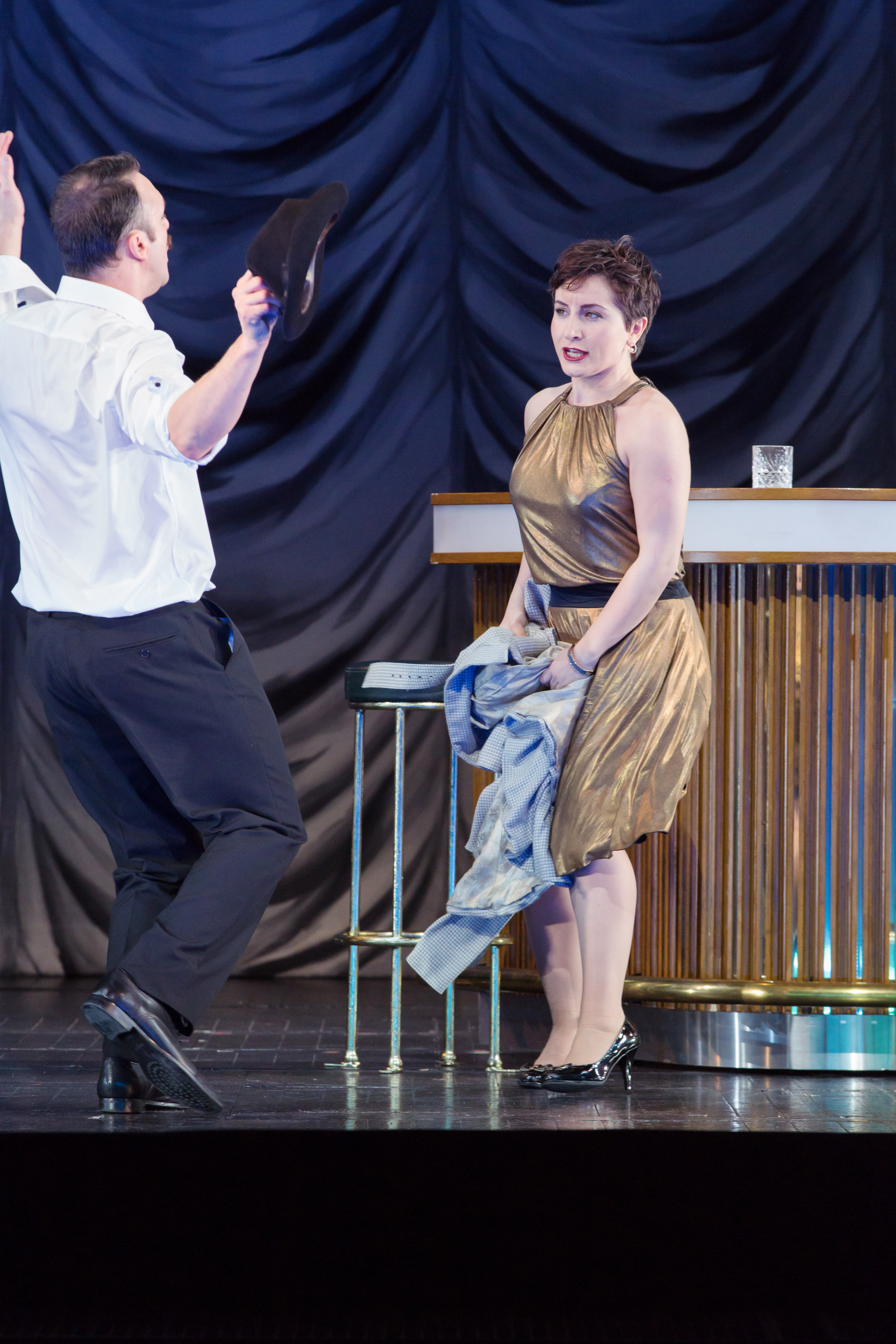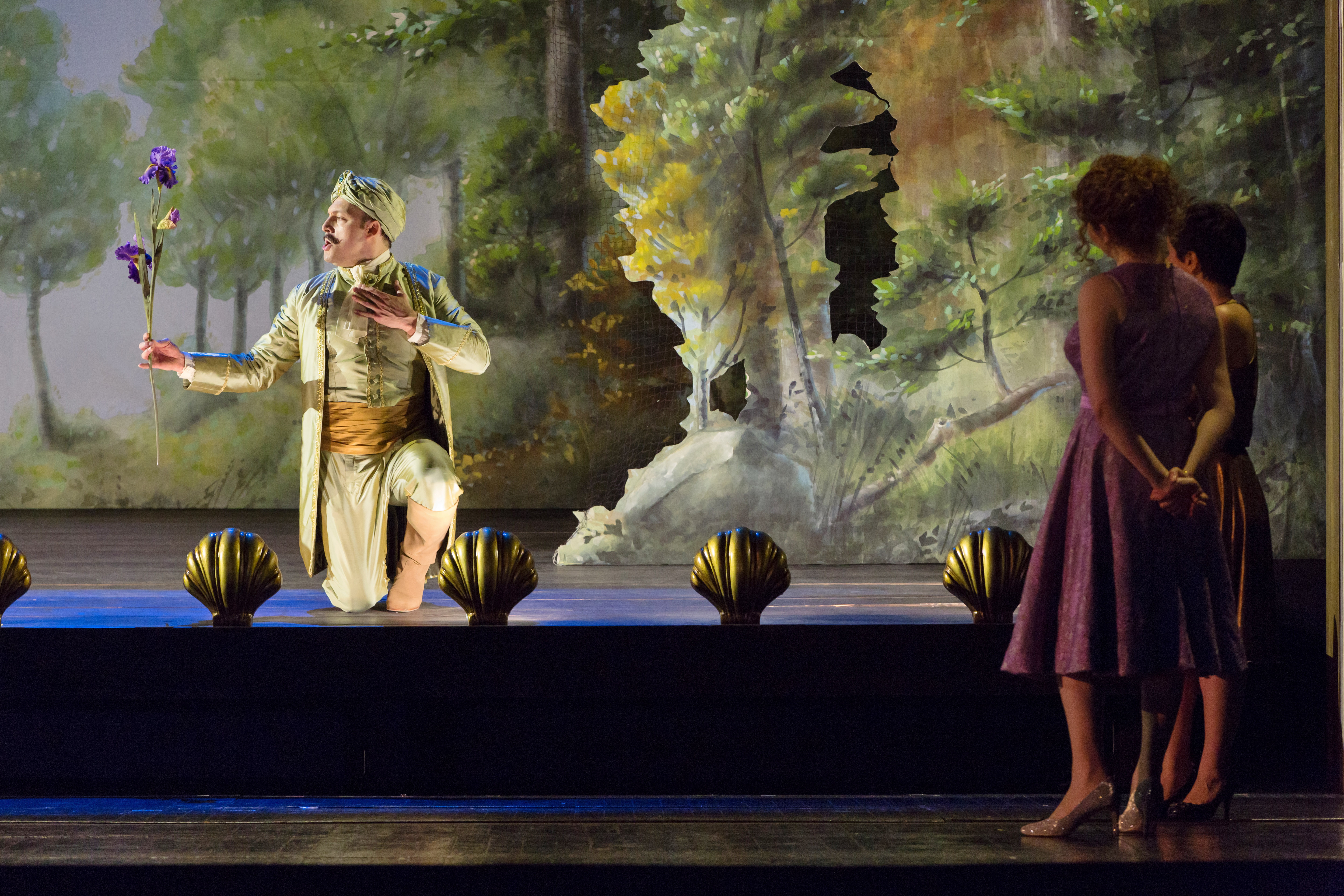MOZART AND DA PONTE IN LONDON AND MUNICH
Partnerships between composer and librettist are an essential complexity in the composition of successful opera. Some examples in its history include Mozart and Lorenzo Da Ponte, Verdi and Arrigo Boito, Strauss and Hugo von Hofmannsthal and of course Gilbert and Sullivan. The pairing of Mozart and his Italian librettist produced three outstanding opera buffa Le nozze di Figaro, Così fan tutte and Don Giovanni. To see two of these three in quick succession was a revelation and confirmed the relevance of these timeless masterpieces to modern times.

The short title Così fan tutte literally means “So Do They All”, using the feminine plural to indicate women. It is usually translated in to English as “women are like that” or “all women do it”. Da Ponte’s alternative title is La scuola degli amanti (The School for Lovers).
Così fan tutte | 13th March | Royal Opera House, London
The first performance of Mozart setting took place at the Burgtheater in Vienna in 1790. The first British performance was in 1811 and it was not performed in the US until 1922 when it was given at the Met. Unusually for Mozart this opera had a difficult reception since its first performance. The rather feminist story of exchanging fiancées derives from Greek myths, Shakespeare’s Taming of the Shrew and Cymbeline as well as Ovid’s Metamorphosen.
The opera tells the story of two men convinced by an older friend to test the fidelity of their girlfriends. The women fail the test leaving all four very confused has to who should be with whom.

In this recent production by Jan Philipp Gloger the opera is set in a theatre where Don Alfonso, an impresario takes the lovers “on a theatrical, emotional journey” to teach them about the nature of love. It is a school for lovers. That it’s not easy as they thought but something that we have to fight for almost every day. The subject matter did not offend Viennese sensibilities of the time but in the 19th and early 20th centuries was considered risqué, vulgar and even immoral. The opera was rarely performed and when it did appear it was presented in a bowdlerised version. After World War II it regained its place and is frequently performed today.

With one notable exception the cast was youthful. The veteran Welsh baritone Sir Thomas Allen was the cynical philosopher Don Alfonso who guided the young lovers through their paces. The young Hungarian baritone Gyula Orendt stole the show with his good looks and swagger. He sang with open-throated ease and reached high G in the cadenza of Non siate ritrosi. His seduction duet with Dorabella (enchantingly sung by Serena Malfi) was all charm and vitality. Fiordiligi sung by Georgian soprano Salome Jicia who first studied piano later studying voice at Santa Cecilia in Rome with Renata Scotto. She proved to have a voice of creamy-toned beauty and her wide range encompassed the music that was written for Da Ponte’s mistress with ease.

According to William Mann Mozart disliked prima donna Adriana Ferrarese, Da Ponte’s arrogant mistress for whom the role of Fiordiligi was written. She had a tendency to drop her chin on low notes and throw back her head on high ones, Mozart deliberately alternated leaps from high to low in her two arias creating a humorous effect. One of the high points was the tenor aria “Un aura amarosa” sung with beautiful head voice by Paulo Fanale as Ferrando. Despina the maid was sung by Serena Gamberoni with relish of words making for high comedy in the two finales. The young Italian conductor Stefano Montanari had a firm grip over proceedings especially attentive to balances within the orchestra and on stage. The multiple duets, trios and ensembles were perfectly judged though the horns were having an off day. His expert secco recitativo made for lively accompaniment of the drama.
Don Giovanni | 5th March | Bayerisches Staatsoper, Munich
Although strictly not a comic opera Don Giovanni blends comedy, melodrama and supernatural elements in a tale based on the legend of Don Juan. The fictional libertine and seducer may have been chosen as subject matter because of the overwhelming success of Mozart’s trip to Prague. The genre of 18th century Don Juan opera originated in Prague where Mozart’s opera was premiered in 1787 at the National Theatre now called the Estates Theatre. The first performance was conducted by Mozart himself and was received rapturously by press and public alike.

For its first performance in Vienna in 1788 Mozart added two significant new arias “Dalla sua pace” for Don Ottavio and “Mi tradi” for Donna Elvira and made some cuts. Theatre director and set designer, husband and wife team of Stephan Kimmig and Katja Hass made an attractive mise-en-scène. The orchestra was in the safe hands of young American conductor James Gaffigan. American-trained Gaffigan held fellowships at Aspen and Tanglewood winning first prize in the Sir Georg Solti Conductors’ Competition in Germany. In his hands the orchestra responded beautifully with delicate singing lines tossed between strings and woodwinds in the lively passages of the overture. The appropriately menacing string scales were given much character. The principals were cast from strength headed by sixty year old British baritone Sir Simon Keenlyside. He was a boy chorister at St. John’s College Cambridge later returning to Cambridge University to read zoology and as a choral scholar before studying singing at The Royal Northern in Manchester. Since then his career principally in the Italian repertoire has taken off internationally. His voice has lost none of its bloom although the high A in the acts two finale was strained. Otherwise his superior legato singing and breath control won him the day. Singing with style and ardour his duet with Zerlina (Elsa Benoit was a delicious soubrette) “La ci darem la mano” was a high point. The Champagne aria and the serenade also went very well. Don Giovanni’s side-kick Leporello was sung expressively by Alex Esposito. Mention must be made of the beautiful tenor voice of Stanislas de Barbeyrac as a youthful Don Ottavio. Donna Anna had a strident delivery and big voice. Donna Elvira by contrast was much slimmer with less vibrato. Both acquitted themselves favourably in their arias and blended outstandingly in their many ensemble pieces.
There is much to be grateful for on the international opera stages in Mozart operas in present times. The quality of voices and vocal ability in Verdi for instance is not necessarily as consistently good. But it seems that for more Mozart it is another matter.





